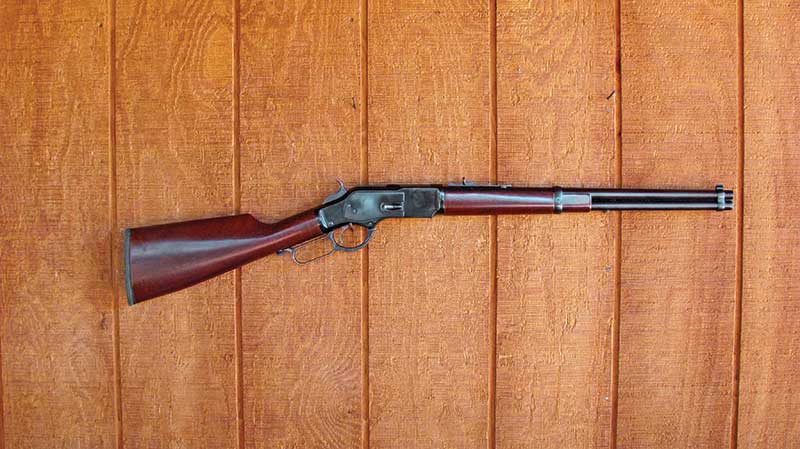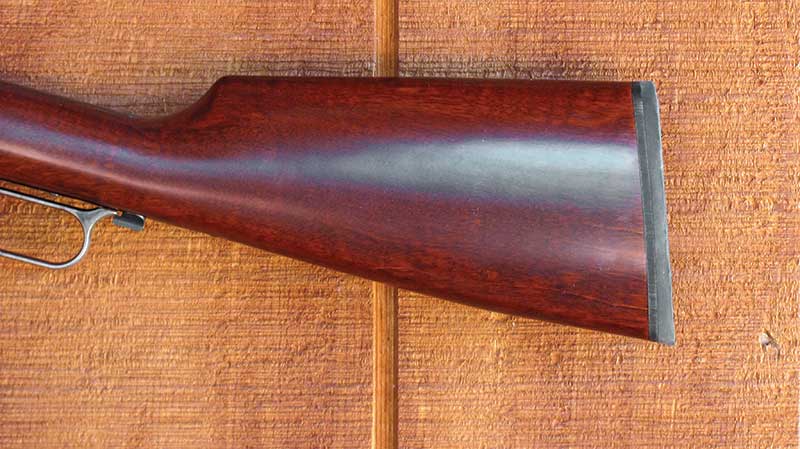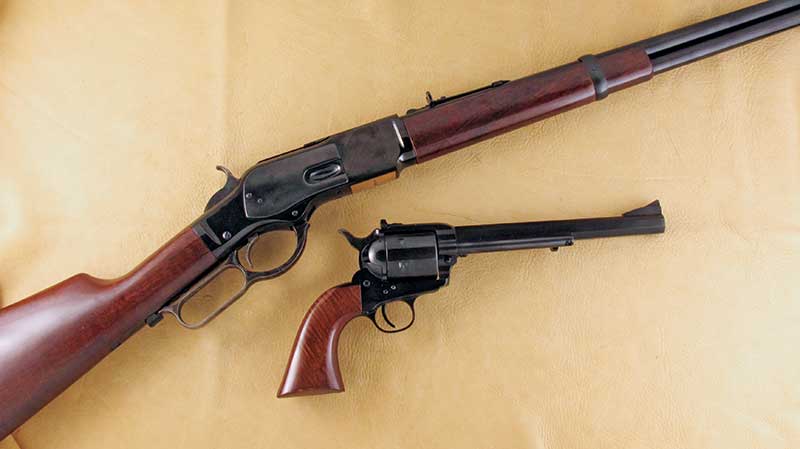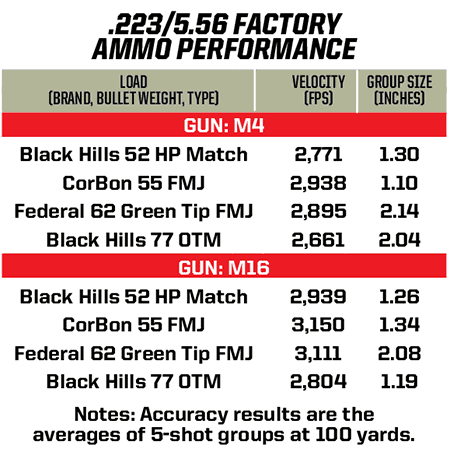Cimarron Model 1873 .44 Magnum
This Imported Classic Blasts Through The
Power Ceiling Inherent In A Toggle-Link Action
The early days of Winchester featured 3 banner years—1860, 1866 and 1873. In 1860 came the Henry B. Tyler. Henry was Winchester’s shop foreman and the lever-action “Winchester” which bears his name was chambered in .44 Rimfire. The magazine tube loaded from the front much like a modern-day .22.
The subsequent 1866 was the first lever action to be labeled a “Winchester” and it differed from the 1860 in having the now-traditional loading gate on the side of the receiver. Both the 1860 and 1866 had brass frames (the 1866 was known as the Yellow Boy).
With the coming of the 1873, the frame was first iron and then steel and the chambering was the first Winchester centerfire—the .44 WCF, today it’s mostly known as the .44-40. Now, the .44 WCF/.44-40 is not normally regarded as a high-powered rifle cartridge. However, in 1873 it was twice as powerful as the comparably anemic .44 Rimfire.
Today, Cimarron imports Uberti-made replicas of all three of the first Winchesters—1860, 1866 and 1873—in various barrel lengths and versions and in the original chamberings. In some models they’ve added .38 Special, .357 Magnum, .44 Special and .45 Colt. Now the most recent chambering offered is the .44 Magnum (yes—I said .44 Magnum). Anyone who has been around has heard of the weak action of the Model 1873 compared to the strong action of the later Model 1892. The ’92 has twin locking bolts at the back of the action while the ’73 (as well as the ’60 and ’66) is a weaker toggle-link action. I have extensive experience with these toggle link actions in .38 Special, .357 Magnum, .38-40, .44-40, .44 Special and .45 Colt. I do not shoot loads in any of these rifles except those we would consider “standard loads.” I especially do not try to hot-load the .44-40, .44 Special and .45 Colt. So how in the world does Uberti get by with offering the Model 1873 in .44 Magnum?
First let’s take a close look at this Model 1873. Just as we have come to expect from Cimarron/Uberti, this is an excellent reproduction of the original. It’s nicely fitted and finished—all blue with a European walnut buttstock and forearm. Sights are traditional—buckhorn rear and a post front.
There’s a dust cover over the top of the action that can be slid forward for carrying. When the first cartridge is chambered, the dust cover slides backwards and stays there until it is manually pushed forward again.
There’s also a locking lever on the frame at the rear of the lever’s loop to lock the lever in place. Most of these replicas—as well as the M1876, M1886 and M1892—all come with curved steel butt plates to dig into your shoulder. Thankfully, this Model 1873 has a rubber shotgun-type butt pad which is much more comfortable. Altogether it’s a good-looking .44 Magnum carbine.
Firing & Function
All loads I tried functioned flawlessly. With the action of the Model 1873 in which the cartridges come straight back and then up on an elevator, the overall cartridge length is critical. Cartridges which are too short will allow the next cartridge to protrude from the magazine and jam up the action. Those which are too long will not feed completely onto the lifter. Cartridges with heavyweight bullets (meaning an OAL greater than standard 240-grain loads) are not only too long to feed, most are recommended only for such .44 Magnums as the Redhawk and Super Redhawk and are in a +P+ category. These should—must—be avoided in the Model 1873, even if they could be single-loaded.
So how is Uberti able to chamber the Model 1873 in .44 Magnum in the first place? Beretta owns Uberti and they specially heat-treat the frames for the .44 Magnum models with the result being a higher Rockwell hardness than the standard .45 Colt, .44 Special, and .44-40 versions. Uberti also uses different stronger steels and special heat-treating of inner parts for the .44 Magnum models.
So, is the Uberti/Cimarron Model 1873 safe when chambered in .44 Magnum? I admit it took me several weeks before I worked up the courage to shoot factory .44 Magnum loads in it. And when I did shoot it I stayed away from any heavy loads I described earlier. Finally, I spent three mornings shooting the carbine, using six factory loads with 240-grain bullets, and one each with 180- and 200-grain bullets.
Even though buckhorn sights and I are no longer the best of friends, I was surprised at how well I was able to shoot the Model 1873. My most accurate load turned out to be the CCI Blazer 200-grain JHP which clocks out right at 1,750 fps and puts four shots in 1-1/8-inch at 42 yards. This was closely followed by the Federal 240-grain JHP (1,690 fps, 1-1/4 inch). Both the Federal 240-grain Hydra-Shok and the Winchester 240-grain JHP clock right at 1,730 fps and group at 1-3/8 inches.
My favorite .44 Magnum whitetail load is the Black Hills 240-grain JHP which groups in 1-1/2 inches and clocks 1,680 fps. I’ve used this particular load in sixguns to take 24 whitetails, one cougar and several exotic sheep all with one shot each. It simply has never let me down. Any of these loads, though, would certainly be adequate for deer and black bear.
This Cimarron .44 Magnum Model 1873 has proven itself to me using loads with the parameters I set. How will it hold up over the long run? Only time will tell, and at my age—with the loads I’ll be using—I don’t think I have to worry about this at all.
For my everyday use I will probably use only .44 Magnum handloads in the .44 Special range, normally delivering 900 to 1,000 fps from a 5-1/2-inch sixgun. These will do anything I need to do on a daily basis.
Black Hills Ammunition
P.O. Box 3090, Rapid City
SD 57709
(605) 348-5150
www.blackhills.com
CCI/ Speer
P.O. Box 856
Lewiston, ID 83501
(800) 379-1732
www.speer-bullets.com
Federal Cartridge
900 Ehlen Dr.
Anoka, MN 55303
(763) 323-2300
www.federalcartridge.com
Winchester Ammunition
600 Powder Mill Rd.
East Alton, IL 62024
(618) 258-3340
www.winchester.com








